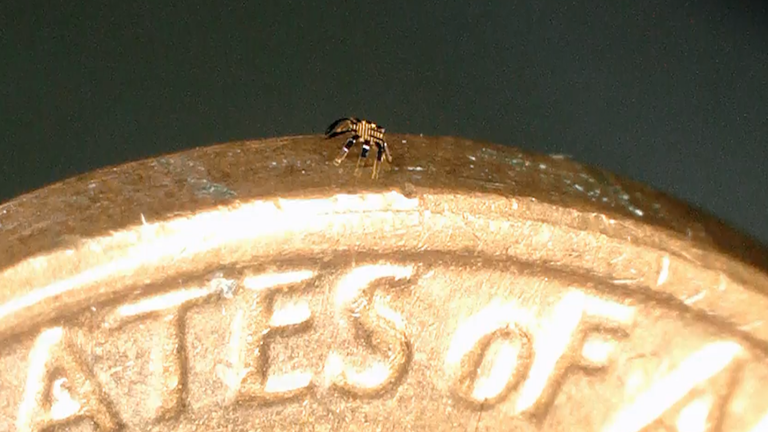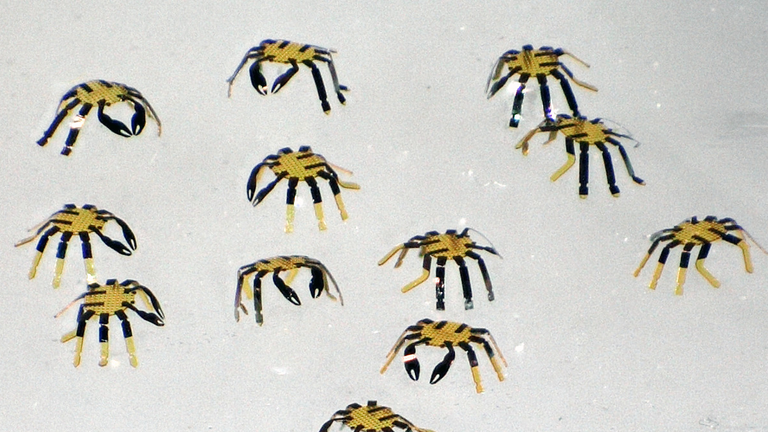[ad_1]
Engineers have unveiled the smallest remote-controlled walking robot ever created – even tinier than a flea.
The tiny robotic crab can “walk, bend, twist, turn and jump” according to engineers from Northwestern University in the US. It could signal the beginning of a new era of microscale robotics.
The little machine isn’t powered by miniaturised hardware and electronics, but instead by a shape-memory alloy material that transforms when it is heated.
How do they move?
The researchers use a scanned laser beam to rapidly heat the device at different locations across its body to make them transform and effectively force the robot to move.
One of the tricks the researchers used was covering the device in a thin coating of glass that forces that part of the robot’s structure to return to its deformed shape after it cools.
“Because these structures are so tiny, the rate of cooling is very fast. In fact, reducing the sizes of these robots allows them to run faster,” explained Professor John Rogers, who led the experimental research.
Part of the achievement was in the manufacturing process, which involves bonding flat precursors on to slightly stretched rubber – which forces the crabs to take on a 3D shape like a pop-up book.
The work remains exploratory and experimental, however.
Despite the comparable range of movement and size, the crab bot is much slower than a flea and has “an average speed of half its body length per second,” according to Professor Yonggang Huang, who led the theoretical work.
“This is very challenging to achieve at such small scales for terrestrial robots,” Prof Huang added.
Created on a whim
Northwestern University stated: “Although the research is exploratory at this point, the researchers believe their technology might bring the field closer to realising micro-sized robots that can perform practical tasks inside tightly confined spaces.”
“You might imagine micro-robots as agents to repair or assemble small structures or machines in industry or as surgical assistants to clear clogged arteries, to stop internal bleeding or to eliminate cancerous tumours – all in minimally invasive procedures,” added Prof Rogers.
Millimetre-sized robots resembling inchworms, crickets, and beetles were also created – but Prof Rogers’ and Huang’s students settled on peekytoe crabs.
“We can build walking robots with almost any sizes or 3D shapes,” Prof Rogers said.
“But the students felt inspired and amused by the sideways crawling motions of tiny crabs. It was a creative whim.”
The research has been published in the journal Science Robotics.
[ad_2]



